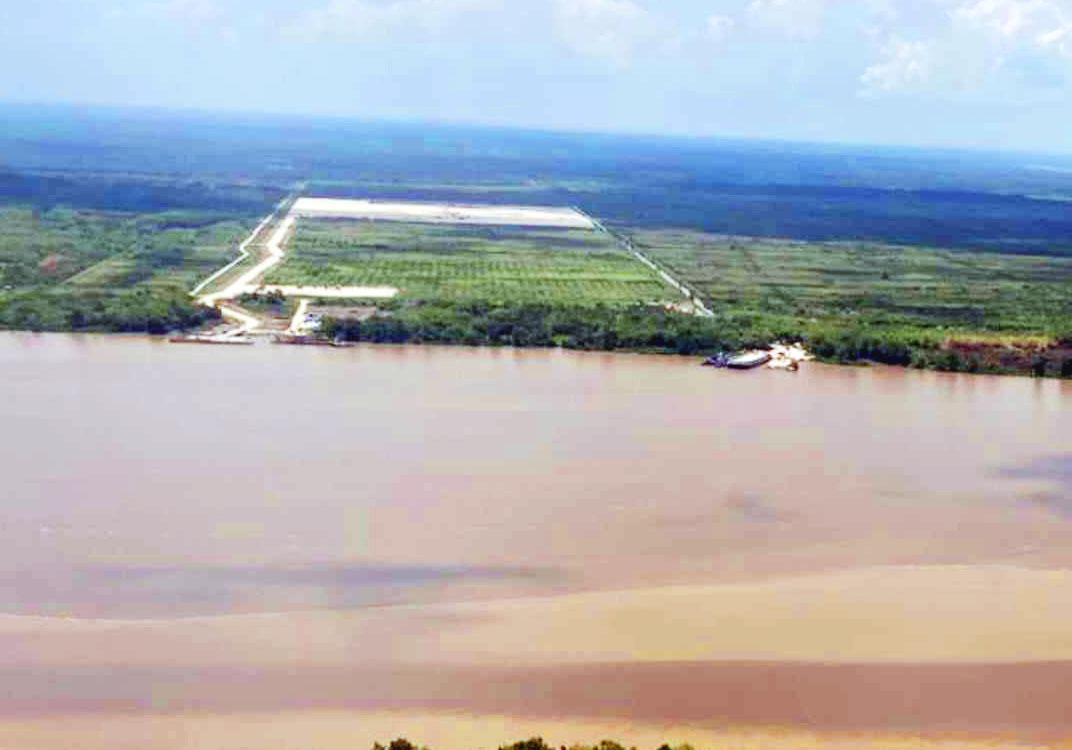Vice President Bharrat Jagdeo yesterday declared that the government will not rely on Bunker C (fuel oil) or diesel but instead, focus on incorporating biofuels as a way of transitioning to cleaner and renewable energy.
He made this disclosure yesterday during a year-end press briefing held at Freedom House, Georgetown, in his capacity as General Secretary of the People’s Progressive Party Civic (PPP).
“We have an energy mix that we have outlined already as part of our national development strategy which focuses on gas [not only] as a major transitional fuel but as baseload hydropower, solar etc.”
Jagdeo was referring to the Wales Gas-to-Energy Project which will establish infrastructure so that natural gas can be transported from the Stabroek Block’s Liza oilfield to an integrated gas processing facility at Wales, West Bank Demerara.
The project will deliver natural gas liquids (NGL) and dry gas to the Government of Guyana.
A subsea pipeline is expected to be installed on the seafloor to transport natural gas from the Liza field to an onshore pipeline at West Coast Demerara.
Onshore, a pipeline will deliver the gas to an integrated facility in Wales. At this facility, an NGL processing plant will treat the gas to extract NGLs for commercial use, and a 300-megawatt (MW) power plant will use the dry gas to generate electricity for domestic use. It is expected that the cost of electricity for consumers will be reduced by some 50 per cent. Currently, the power utility, Guyana Power and Light (GPL) provides electricity at a rate of 15 US cents per kilowatt hour.
The General Secretary noted that the project, when complemented by solar and hydropower, can triple or quadruple Guyana’s electricity generation capacity and reduce emissions by 50 or 70 per cent.
“At some point, the government can triple its installed generation capacity now or maybe quadruple its installed capacity and still reduce emissions by 50 per cent or more so that we can pursue energy transition, which is important to us,” he added.
The Vice President posited that there are investments in renewable energy sources around the world that are insufficient to meet the global energy demand, but natural gas is being used as a transitional fuel.
He is adamant that bunker c fuel and diesel will be a tale from the past since these pollutants cannot contribute to his government agenda for energy transition (i.e. renewable).
“In the future, we will not rely on Bunker C fuel and diesel which is the most polluting fuel and we are also looking at some biodiesels, as you know we have some projects with India concerning biodiesel which we are currently working on to complement the energy mix.”
Back in July of this year, Guyana and 19 other countries joined India as initiating members of the “Global Biofuels Alliance” (GBA).
Notably, New Delhi is on the verge of expanding the deployment of biofuels as a low-carbon pathway.
According to a press release from the High Commission of India in Guyana, the “fuels for the future” was one of the elements that took top priority at the Energy Transitions Ministerial Meeting. On July 22, in Goa, India, on the sidelines of the Energy Transitions Ministerial Meeting, a stand-alone event on consultations and recommendations for the GBA was organised.
The release read: “This event received strong support from countries within and beyond the G20. Nineteen countries expressed their interest in being the initiating members of the alliance with 15 countries and nine International Organizations attending the event,” adding, “This signifies a momentous step forward in advancing the development and deployment of biofuels through a multi-stakeholder global alliance.”
This GBA event witnessed participation from the energy ministers of 13 countries and heads of nine international organizations.
Among the many countries that welcomed the initiative were: Argentina, Bangladesh, Brazil, Canada, Guyana, Italy, Kenya, Mauritius, Paraguay, Seychelles, the United States, UAE and Uganda, and international organizations such as the Bio Future Platform, Inter-national Civil Aviation Organization, International Energy Agency, Internation-al Energy Forum, International Renewable Energy Agency, World Bank, World Biogas Association, and World Economic Forum.
The Vice President also hinted at the government’s intention to introduce biofuels soon, to serve as “transportation fuels.”
Biofuels usually apply to liquid fuels and blending components produced from biomass materials called feedstock. Most biofuels are used as transportation fuels, but they may also be used for heating and electricity generation. Gaseous fuels produced from biomass that are used directly as a gas or converted to liquid fuels may qualify for use in government programs that promote or require the use of biofuels. It can also be used to decarbonise industries and supply chains. For example, everyday products transported on ships powered by biofuel will have a reduced Scope 3 carbon footprint.
Traditional combustible fuel ingredients, like the crude oil used to make petroleum or diesel, aren’t renewable resources and generate significant carbon emissions. The feedstock used to create biofuels can either be grown relatively quickly or are by-products of other industries, like food processing, agriculture, or construction. This form of renewable energy is capable of emitting fewer greenhouse gases when used in combustion engines than regular petrol or diesel and can also be blended with regular fuels to make them burn more efficiently and release fewer emissions.









